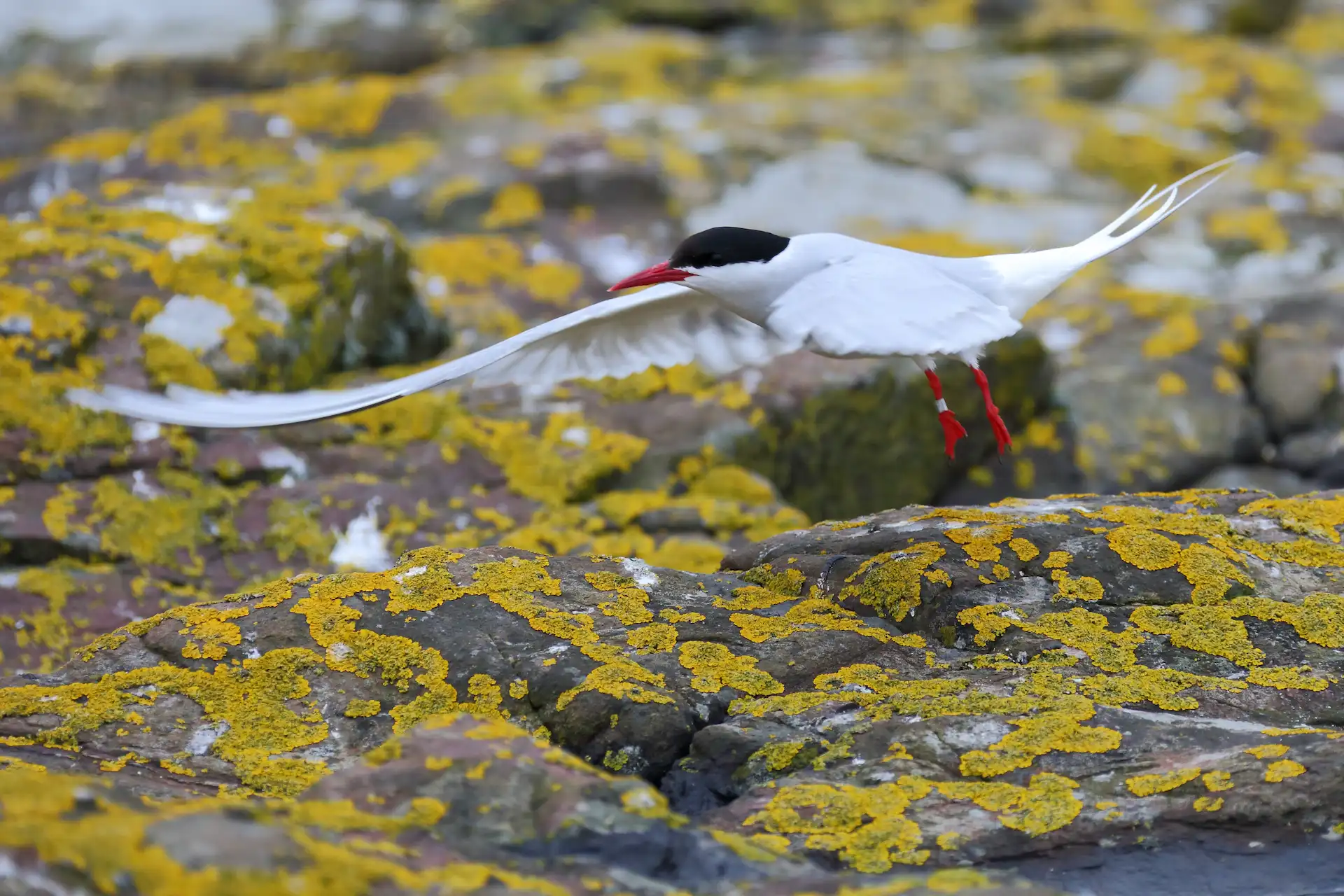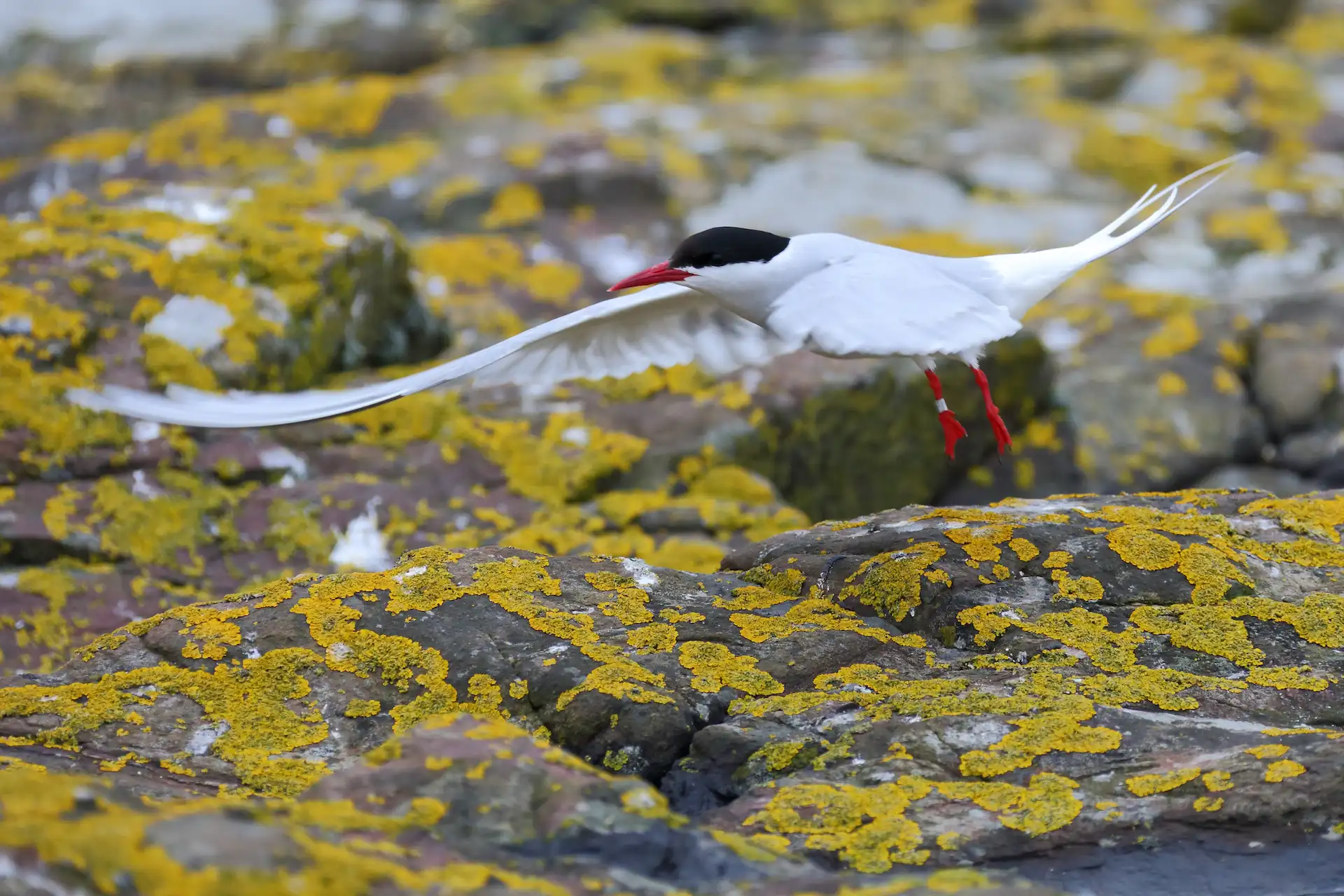
Wildlife Fact Sheet
Arctic Tern
Sterna paradisaea
About
Arctic terns are a pale gray color with plumage that depends on breeding status. Breeding individuals have black feathers on the top of their heads, a red beak and red legs, while non-breeding adults have black beaks and legs and a smaller black cap that forms just around the eye area. Their small, slender bodies mean they are very agile, and can snatch up fish just below the surface of the water, or from other birds.
Arctic terns gather in colonies when it’s time to prepare a nest and give birth. Nesting pairs will defend their nest vigorously from threats—so much so, that some other bird species will nest nearby to benefit from their protection. Once the young can properly care for themselves, adults head back to the open ocean for some space and fresh air. In Yup’ik, the name for Arctic terns is Teqirayuli, which according to the Alaska Native Knowledge Network means roughly, “the dear little bird that is good at using its bottom to disadvantage others.” In other words, their dive-bombing skills are very good!

Did You Know?
Arctic terns have one of the longest known migration routes—traveling more than 50,000 miles in one year. Because they live in the Arctic for the northern summer and the Antarctic for the southern summer, they see more daylight each year than any other animal. Talk about searching for that “endless summer.”
Join our mailing list
Status and Conservation
Arctic terns are long-lived: they can live for up to 34 years and don’t reach maturity until they are about three or four. This life history strategy means they can be more susceptible to threats. Although they are not endangered, their populations are decreasing because of threats including climate change and invasive species.
Fast Facts
- Arctic Tern